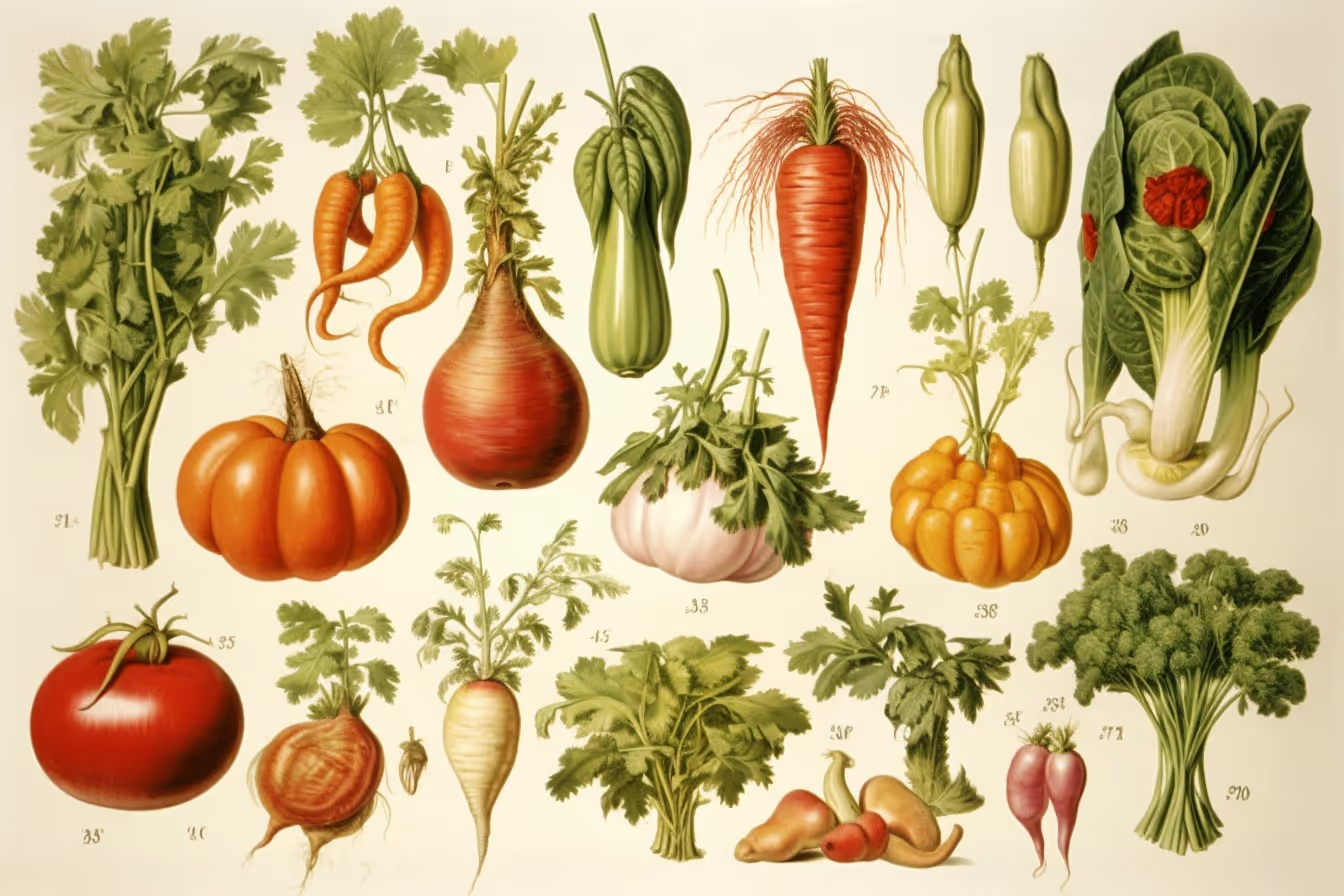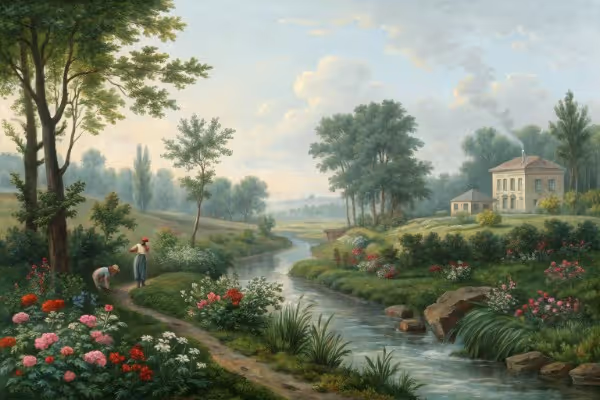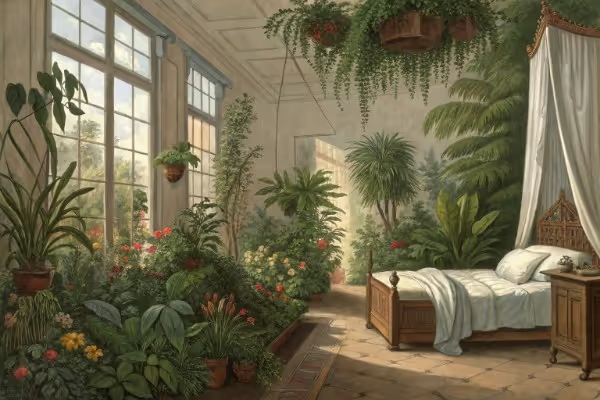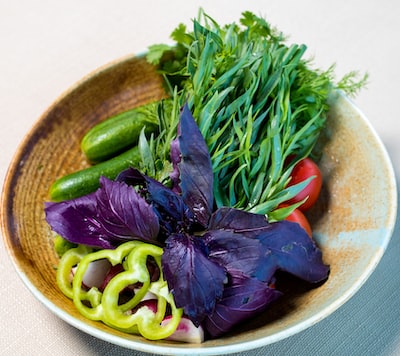Zone 11 Planting Guide: Top Plants for a Flourishing Garden

Zone 11 planting guide
This Zone 11 planting guide reveals vibrant plants that thrive effortlessly in your tropical backyard. Pick out sun-loving beauties, hardy perennials and flavorful edibles tailored specifically for year-round warmth. Follow this concise Zone 11 planting guide and create a lush outdoor retreat that'll captivate neighbors and host many leisurely evenings ahead.
Cheatsheet: Lush Plant Picks for Zone 11 Gardens
🌞 Zone 11 Essentials
- USDA Hardiness: >40°F (>4.5°C) year-round
- Best for tropics, coastal & desert areas
- Frost-free: Grow year-round
🌴 Top Ornamentals
- Hibiscus: Constant blooms, attracts pollinators
- Plumeria: Famous for fragrant, vibrant flowers
- Bougainvillea: Thrives in heat, drought-tolerant
- Bird of Paradise: Iconic, sculptural flowers
- Allamanda: Fast cover, golden trumpet-shaped blooms
🍇 Productive Edibles
- Banana: High potassium, fast yields (10-15 months)
- Pineapple: Vitamin C-rich, sun-loving
- Papaya: Protein-digesting enzymes, fruit in 6-12 months
- Moringa: “Drumstick tree,” protein, iron, all edible parts
- Sweet Potato: Tubers + greens, drought-tolerant
- Passionfruit: Vining, antioxidant-rich fruit
💧 Water-Wise Choices
- Agave: Sculptural, survives dry spells
- Aloe Vera: Skin-soothing gel, minimal water
- Plumeria: Tolerates dry spells once established
🌱 Quick Planting Steps
- Check light & space needs for each plant
- Loosen soil, mix in compost (prepTime: 5 min)
- Dig hole twice rootball width (performTime: 5 min)
- Set plant at same depth as pot
- Backfill, water deeply (yield: strong roots)
- Mulch for moisture retention
🛠️ Tools and Products You'll Need
- Spade/shovel
- Hand trowel
- Compost or organic fertilizer
- Mulch
- Drip irrigation or soaker hose
- pH tester
- Quality seedlings or cuttings
🌿 Nutrition & Self-Sufficiency Boost
- Zone 11 supports year-round harvests
- Grow diverse, nutrient-dense crops
- Reduce store visits, increase food security
- Moringa, papaya, banana—superfoods from your yard
I garden where winter never bites, heat keeps humming, and salt rides the breeze. This Zone 11 planting guide reads like field notes from many sweaty seasons and a few glorious harvests.
USDA Hardiness Zone 11 is defined by average annual extreme minimum temperatures of 40 to 50 F, 4 to 10 C. Frost is a rumor, not a risk.
USDA Zone 11: 11a is 40 to 45 F, 4 to 7 C, and 11b is 45 to 50 F, 7 to 10 C, based on 30 year climate normals.
Heat plus humidity drives plant metabolism fast, and it drives disease just as fast. I plan like a marathon, not a sprint, with steady inputs and relentless sanitation.
In many Zone 11 sites the year splits into a dry season and a wet season, often with tropical storms from late summer into autumn. I seed and transplant during the early dry window for vigor and fewer fungal headaches.
Cool tolerant vegetables happen in your "winter" window, roughly 60 to 85 F, 16 to 29 C, mornings pleasant and dew honest. Tomatoes, peppers, cucurbits, and leafy greens behave better then.
Deep wet months favor perennials and roots that shrug off splashing: taro, turmeric, gingers, bananas, cassava, and perennial peanut. I prune hard before the first big squalls.
Zone 11 soils swing from volcanic loams to beachy coral fill, which changes everything. I test pH and texture first, then adjust fertility instead of guessing.
Calcareous coastal soils often sit at pH 7.8 to 8.3. Iron chlorosis shows up in mango, avocado, and gardenias, so I use EDDHA chelated iron and elemental sulfur to nudge availability.
Fast draining sands leach, so I feed light and often with organic 5-2-4 plus micronutrients. I add 5 to 10 percent biochar pre charged with compost tea to raise cation exchange capacity.
My raised bed blend: 40 percent sharp sand, 30 percent finished compost, 20 percent coconut coir, 10 percent biochar. It drains, then holds.
FAO reference evapotranspiration in warm humid tropics often sits near 4 to 6 mm per day, about 0.16 to 0.24 inches. Drip beats sprinklers by cutting disease pressure and evaporation.
I run 0.5 gph emitters, 1.9 lph, two per shrub, then scale to canopy. During dry spells I water daily for shallow rooted annuals and 2 to 3 days for trees, adjusting by mulch depth and wind.
Sea breeze sandblasts leaves and wicks moisture. I plant windbreaks of clusia, sea grape, or vetiver and tuck tender orchids on the leeward side of palms.
For ornamentals that scorch at noon I rig 30 to 50 percent shade cloth. Orchids and bromeliads glow under 40 percent, vegetables thank me at 20 to 30 percent in late spring.
These are the plants I reach for first, with proven cultivars and small space tricks. They feed people and bees, and they shrug off heat that wilts temperate prima donnas.
Mango Mangifera indica: dwarf or semi dwarf like ‘Pickering’, ‘Cogshall’, ‘Carrie’, or ‘Ice Cream’ for patios. Train open center, prune after harvest, and spray copper just before wet season for anthracnose suppression.
Avocado Persea americana: choose A or B flowering types for overlap, and use salt tolerant rootstocks where soils run alkaline. ‘Waldin’, ‘Lula’, and ‘Mexicola’ handle variable conditions, with 100 to 200 liters of water weekly for young trees in the dry months.
Banana and plantain Musa spp.: wind protected, heavy mulch, steady potassium. I plant mats 10 feet, 3 meters, apart and thin to three stems for manageable harvests.
Papaya Carica papaya: fruit in 10 to 14 months, plant three for sex insurance then keep the best female or hermaphrodite. Bag fruit to dodge fruit flies.
Passionfruit Passiflora edulis: a trellis athlete, feeds on compost and steady water. I prune after harvest and re plant every 3 to 4 years for vigor.
Dragon fruit Hylocereus spp.: cactus that loves humidity with drainage, train to a post. Flowers at night, bats and moths clock in, and I hand pollinate for heavier sets.
Moringa Moringa oleifera: leaves, pods, and flowers edible; coppice to 6 feet, 1.8 meters, and feed with wood ash for calcium and potassium.
Ginger and turmeric Zingiber officinale, Curcuma longa: part shade, rich mulch, keep above 59 F, 15 C, soil temperature for sprouting. Lift and re plant the fattest rhizomes.
Pigeon pea Cajanus cajan: living trellis, nitrogen fixer, hurricane recovery champion. I hedge it for windbreaks and chop and drop for mulch.
Perennial greens: katuk, chaya, Okinawa spinach, Malabar spinach, and culantro. They laugh at heat that sends lettuce bolting.
Tomatoes: heat set types like ‘Solar Fire’, ‘Heatmaster’, and cherry types produce in winter into late spring. Mulch deep, prune for airflow, and keep blossoms under 85 to 90 F, 29 to 32 C, for better pollen viability.
Peppers and chiles: Capsicum chinense loves it hot, think habanero and Scotch bonnet. I foliar feed calcium during flowering for firmer walls.
Okra Abelmoschus esculentus: sow into warm soil, 75 F, 24 C, and pick daily for tender pods. ‘Clemson Spineless’ and ‘Jambalaya’ are steady performers.
Yardlong beans Vigna unguiculata subsp. sesquipedalis: thrives in inferno conditions and sets when common beans sulk. Trellis high and harvest often.
Amaranth and callaloo Amaranthus spp.: cut and come again greens that handle brackish breezes. Sow every two weeks for a rolling salad bar.
Roselle Hibiscus sabdariffa: calyces for tea and jam, leaves for a lemony sauté. Keep spacing wide to tame humidity, 3 to 4 feet, 0.9 to 1.2 meters.
Plumeria and desert rose Adenium obesum: sculptural, drought tolerant in pots with gritty mix. I withhold water after leaf drop to prevent rot.
Hibiscus and Bougainvillea: feed modestly, prune after flushes, and give them light to burn. Bougainvillea wants a tight root ball for heavy bloom.
Heliconia, Alpinia, and Costus: rhizomatous gingers that love moisture, mulch, and filtered light. Divide clumps every 2 to 3 years.
Bromeliads and orchids: epiphytes belong up in trees, not suffocating in soggy pots. I strap Vandas and Dendrobiums to palm trunks with biodegradable ties.
Palms: coconut, areca, royal, and lipstick palm in humid pockets. Plant high, never bury the root initiation zone, and irrigate deeply the first year.
Groundcovers: perennial peanut Arachis glabrata fixes nitrogen and smothers weeds, beach sunflower soaks up salt, Wedelia for quick coverage with edging discipline.
I stage a layered canopy: palms as ceilings, gingers as walls, bromeliads as rugs. The shade cools soil by a few degrees F, a couple of degrees C, and cuts irrigation by a third in my beds.
On coasts I push salt tolerant edges like sea grape, cocoplum, and Natal plum, then tuck tender edibles behind them. That little buffer decides whether leaves scorch after a gale or stay glossy.
Night shift pollinators earn their keep in Zone 11. I plant moonflower, night blooming cereus, and Cestrum nocturnum so moths, bats, and beetles find a nectar bar after sunset.
For daytime crews I mix single flower hibiscus, porterweed, and basil left to bloom. The honeybee line forms early on Thai basil spikes.
Humidity is a petri dish, so I schedule pruning for airflow and sanitize tools between plants. Copper, sulfur, and phosphorous acid rotate in my orchard calendar based on disease risk and label guidance.
Fruit flies: bag papaya and mango, deploy protein bait traps, and pick on time. Fallen fruit gets solarized in sealed bags for a week.
Whiteflies and scale: introduce Encarsia wasps or lacewings, lean on horticultural oil, and rinse the undersides weekly during outbreaks. Avoid pyrethroids that wipe out the helpfuls.
Snails and slugs: beer traps and iron phosphate pellets, then copper tape around raised beds. Ducks adore patrol duty if your zoning allows them.
Zone 11 rains can leach nutrients in days. I side dress with slow release organics, broadcast micronutrients quarterly, and keep 3 to 4 inches, 7 to 10 cm, of woody mulch under everything.
Seaweed extract helps trace elements after big storms. Compost tea perks up soil life, but I treat it like espresso, not an all you can drink buffet.
Heat plus reflected light cooks pots, so I use light colored containers and double pot delicate roots. Citrus, dwarf mango, dragon fruit, and peppers all behave well in 20 to 30 gallon, 75 to 115 liter, containers with coarse, fast draining media.
Feed small but steady with fertigation at 75 to 100 ppm nitrogen. Flush with clear water monthly to prevent salt crusts.
Drip kits with pressure compensating emitters, 0.5 gph, 1.9 lph, keep water at the root zone. Inline 150 mesh filters save grief.
Shade cloth by percentage: 20 to 30 for vegetables in shoulder seasons, 30 to 40 for gingers and bromeliads, 40 to 50 for orchids in blast furnace courtyards. UV stabilized only.
Grafted fruit trees on region savvy rootstocks: mango on ‘Turpentine’ in Florida sand, avocado on ‘Waldin’ or ‘Lula’ for limestone, and citrus on US 897 or C35 where tristeza lurks.
Soil test kits calibrated for high pH soils, or send samples to extension labs. Chelated iron EDDHA 6 percent for alkaline ground, EDTA for pots.
Organic blends in the 4-2-4 to 6-2-6 range with sea minerals and boron trace. Sprinkle, water in, and watch leaves deepen a shade of green in a week.
Humidity rewards distance. I set mango 15 to 20 feet, 4.5 to 6 meters, on dwarf types and hold them there with summer heading cuts.
Bananas at 10 feet, 3 meters, and a strict three stem rule. Gingers at 3 feet, 0.9 meters, with a clean swath on paths to keep mosquitoes from hiding in kneecap level thickets.
Plant high on mounds, at least 8 inches, 20 cm, above grade on heavy rainsites. Roots breathe, trunks stay dry, and hurricanes drain faster.
Mulch feeds the soil, not the trunk. Leave a donut, not a volcano.
Bag fruit early and often, especially papaya, guava, and mango. You will beat fruit flies and birds by days.
Prune for people, not only plants. A path that stays dry by noon cuts mosquito bites in half.
Perennial peanut under citrus for nitrogen and a pollen buffet. The citrus canopy closes while the groundcover suppresses weeds.
Dragon fruit up a cedar post with bromeliads circling the base. Shade at the feet, sun on the cactus ribs, flowers like chandeliers at dusk.
Vetiver hedges on grade changes with taro in the swale. Erosion control that you can eat.
Mango ‘Pickering’ for small spaces.
Avocado ‘Lula’ on limestone soils.
Banana ‘Dwarf Namwah’ for windier sites.
Papaya ‘Red Lady’ for uniform yields.
Passionfruit Panama Red for vigor.
Dragon fruit ‘Sugar Dragon’ for consistent set.
Moringa as a cut and come again vitamin hedge.
Turmeric ‘Indira Yellow’ in partial shade.
Ginger Rio de Janeiro strain for big hands.
Pigeon pea as trellis and soup in one shrub.
Thai basil for pollinators and pesto with a kick.
Yardlong bean ‘Red Noodle’ in summer heat.
Roselle for tea and ruby jars.
Perennial peanut for living mulch.
Plumeria for scent that stops time.
"The right plant in the right place." Beth Chatto said it first and best, and Zone 11 proves it daily.
University extension bulletins in Florida, Hawaii, and Puerto Rico consistently show better yields when plantings shift to the drier months with drip irrigation and mulch layers over 3 inches, 7.5 cm.
USDA Plant Hardiness Zone Map for 11a and 11b temperatures and definitions.
FAO Irrigation and Drainage Paper 56 for reference evapotranspiration values and irrigation scheduling math.
UF IFAS, UH CTAHR, and UPR Mayagüez extension guides for mango, avocado, and tropical vegetable calendars in Zones 10 to 12.
Royal Horticultural Society on pruning and copper use in high humidity orchards.
Zone 11 rewards the bold and the organized. I grow for shade first, feed the soil second, then let the fruit hang heavy and the orchids perfume the dusk.

Want smarter plant choices? 🪴
Frequently Asked Questions About Cultivating Your Zone 11 Garden
What makes gardening in zone 11 unique?
Zone 11 gardens simmer under intense sunshine and carry tropical humidity year-round—conditions that invite bold, heat-loving plants like Birds of Paradise or Hibiscus to flourish spectacularly. This is the zone where standard gardening conventions drift away, replaced by an affinity for plants that relish enduring heat and plenty of moisture.
Can edible plants thrive in these warm climates?
Absolutely. Zone 11 opens up vibrant planting possibilities for food growers. Tropical and subtropical favorites such as mangoes, bananas, pineapples, papayas, and avocados find their sweet spot here. Opt for varieties bred specifically for heat and humidity, and you'll savor an abundance of harvests.
How should planting seasons be approached in zone 11?
Forget traditional frost dates—zone 11 laughs off cold snaps. Instead, consider periods of rainy and dry seasons when planning your planting calendar. Most plants flourish when sowed during the start of the rainy season, taking advantage of nature's watering cans and moderate temperatures.
Which ornamental flowers thrive best in such intense conditions?
Lean into flamboyant tropical blooms that thrive under the sun's relentless rays. Consider vibrant specimens like Plumeria, Bougainvillea, Heliconia, and Ixora. These bold bloomers revel in heat, rewarding you with lush foliage and vivid blossoms year-round.
How do I prevent pests common in tropical climates?
Tropical climates invite an assortment of eager, hungry insects. Prevention and vigilance work hand-in-hand here. Practice regular inspection, foster beneficial insects like ladybugs and lacewings, and use natural repellents such as neem oil to discourage unwelcome guests from feasting in your garden.
Should I use mulch or ground cover plants in my heat-intensive garden?
Without a doubt. Mulch or groundcover plants offer a shield against moisture loss, control weeds, and moderate soil temperatures. Organic mulch like bark or leaves gradually enriches your soil, while heat-tolerant ground covers like perennial peanut or creeping thyme enhance your outdoor oasis.
Zone 11 asks for a bold touch and a sharp eye. Heat-loving plants and tropical standouts thrive here, so lean in—bring on bougainvillea, mango, plumeria, and all the lush color you can handle. Don’t forget the value of companion planting to keep pests at bay and boost your yields. Remember, soil health and consistent watering are your best friends, especially as the mercury climbs. For those looking for more options, check out our Zone 10 planting guide or even Zone 13 for inspiration. This Zone 11 planting guide should give you the confidence to grow something extraordinary—no matter how relentless the sun. Plant smart, water deep, and enjoy the riot of life that only this zone delivers.
Health Benefits of Cultivating Zone 11 Plants
Boost Immunity with Vitamin-Rich Crops
- Moringa leaves: supply 7 times more vitamin C per gram than oranges, aiding immune function.
- Guava fruit: provides dietary fiber and high antioxidants, supporting digestive health and cell protection.
Enhance Mental Health Through Therapeutic Gardening
Cultivating plants outdoors reduces cortisol, improving mood and lowering stress levels by up to 30 percent.
Fresh Herbs for Nutrient Density and Flavor
- Holy basil (Tulsi): contains adaptogenic properties, combating inflammation and stress.
- Lemongrass: rich source of manganese, promoting bone health and metabolism regulation.
Skin Protective Plants for Tropical Sun Exposure
- Aloe vera: topical gel alleviates skin irritation and sunburn, hydrating effectively.
- Hibiscus flowers: antioxidants aid collagen synthesis, enhancing skin elasticity and protection.
Support Cardiovascular Health With Tropical Fruits
Regular consumption of potassium-rich starfruit and papaya regulates blood pressure, reducing heart disease risk by approximately 15 percent.
Find out which plants will thrive in your garden!
Answer a few fun questions and get custom plant recommendations perfect for your space. Let’s grow something amazing together!

start your season





